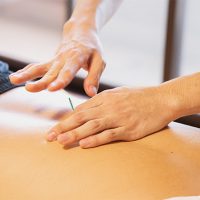Sinusitis may be in some cases barely symptomatic, which is why exercise enthusiasts often believe they’re able to stick to their vigorous workout routine without any consequences.
“It’s just a flew” or “just the sniffles” is how a sinus infection is usually disguised, sometimes not even being diagnosed.
Here’s everything you need to know about sinusitis symptoms, how to treat it, and find out if it helps to exercise during the infection and when it’s potentially harmful.
How to know you have a sinus infection
Affecting millions of people across the world, sinusitis is one of the peskiest conditions you may not even know you have. In fact, most common sinusitis symptoms very much resemble a common cold:
- Nasal congestion
- Sore throat
- Facial pain
- Mucus drainage down the throat
- Thick, yellowish mucus discharge
- Coughing
- Fever
- Loss of (or diminished) sense of smell
- Toothache
- Ear fullness and pressure
- Loss of energy and fatigue
- Headaches along the sinus area
Although not deadly, sinus infections can have severe enough symptoms to interrupt your life quality.
Sinusitis can be caused by viruses, bacteria, or fungi. Different causes usually determine the severity of symptoms, which is why it’s best to do a nasal swab to determine what’s causing your symptoms before it becomes a chronic infection.
Bacterial and fungal infections are successfully treated with antibiotics and antifungal meds, but if you have viral sinusitis, then suppressing the symptoms is the best that medication can do (nasal sprays and/or saline rinse, or corticosteroids)
There are many factors that may cause this issue, but it mostly occurs when your immune system is weakened after an illness, long antibiotic use, or due to a poor diet and lifestyle.
Is exercise good for a sinus infection?
During exercise, your circulation is boosted, the body is heating, your breathing is faster and voluminous. As your breathing accelerates, the sinuses work harder to control the air temperature and humidity, so you need their best performance to stay cool and have a proper air supply.
Turning to physical activity when having sinusitis may help in this sense – body heating will lead to sinuses expanding, the mucus thins out and its discharge is improved. What’s more, exercise promotes endorphin production which helps with the creation of white blood cells, the guardians of our immune system that will fight infection.
That said, some stronger symptoms like nose congestion, coughing, fever, fatigue can be crippling for exercise, making it difficult for you to breathe and work out properly, leading to more problems than benefits.
Is walking good for a sinus infection?
Low-impact physical activity may be helpful with nasal congestion, proper breathing and boosting the immune system when having sinusitis.
That said, in case of severe symptoms like fever, fatigue, throbbing migraines, it’s better to skip any kind of physical strain and rest.
It’s important to understand how your body reacts to exercise and see what it does to the healing process.
Furthermore, long walks in crisp, cold air may also worsen the symptoms, as the cold may irritate your nasal mucous membrane and trigger sharp pain. So make sure to stay warm and avoid wind, freeze, and other weather conditions that could affect your already sensitive sinuses.
Jogging and running with sinusitis
A stuffed nose, pressure in the ears, nasal swelling, fever…all of these are red flags for high-intensity exercising such as jogging and running.
Although you may think your morning jog is helping with your breathing and congested nose, eventually your pulse will increase, pumping the blood faster and increasing blood pressure. This leads to sinuses swelling up, causing pressure and throbbing headaches.
Adding salt to injury, when you start running with a clogged nose, access mucus built up, and a sore throat (not to mention fever), you’re already in for trouble. The body is not able to properly supply oxygen, causing dizziness, fatigue, coughing, thus a risk of feeling worse or even fainting.
No matter how fit and used to running you are, you may consider avoiding these workouts at least until the symptoms of sinusitis diminish.
Lifting weights with a sinus infection
Similar to cardio, strength training poses a lot of problems when you’re dealing with a sinus infection.
If you’re feeling under the weather and experience symptoms below the neck (chest pain, coughing, muscle soreness, etc.) adding more strain to the body may only make things worse.
Weight lifting puts even more pressure on the head as your body fights resistance by pushing.
Since your nasal passages are clogged and swelled, you risk compromising proper breathing, increasing the swelling, which can lead to dizziness, loss of balance, pressure in the head, ears and chest.
Swimming with sinusitis
Apart from the physical exhaustion that can intensify the symptoms, there are other dangers of swimming when you have swollen sinuses.
Chlorine, a common disinfectant in pools, can irritate the nasal cavity and trigger excessive mucus secretion. The same goes with water getting into the ears, nose, and mouth. Deep diving is also a no-no, as it tampers with the ear pressure, which may cause even more discomfort and blockage while dealing with sinusitis.
On the other hand, salty water (which is pretty much what a saline rinse is) proved beneficial for clearing the nose and washing out the stubborn thick and dried mucus. Therefore, enjoying a nice, surface swimming in the sea or ocean may contribute to your sinusitis recovery.
The best exercise for sinus infection
So what is the best way to exercise for sinusitis?
First, make sure that you’re not having fever, difficulty breathing, or severe coughing as this means you should resolve to resting and healing.
When those are excluded, low-impact activities like walking or yoga can be beneficial for opening your airways and unclogging your nose and sinuses.
That said, it’s crucial to avoid vigorous exercise, resistance training, or complicated poses that could put more pressure on your nasal cavity and prolong the recovery process.


